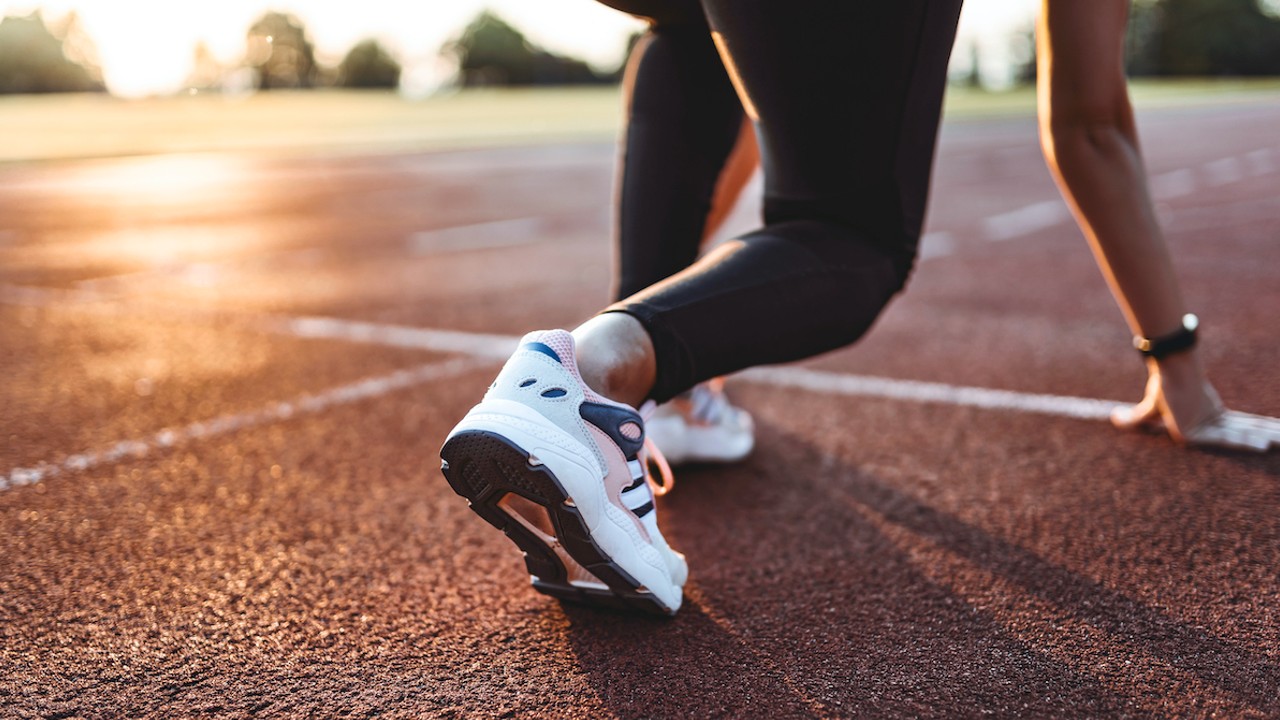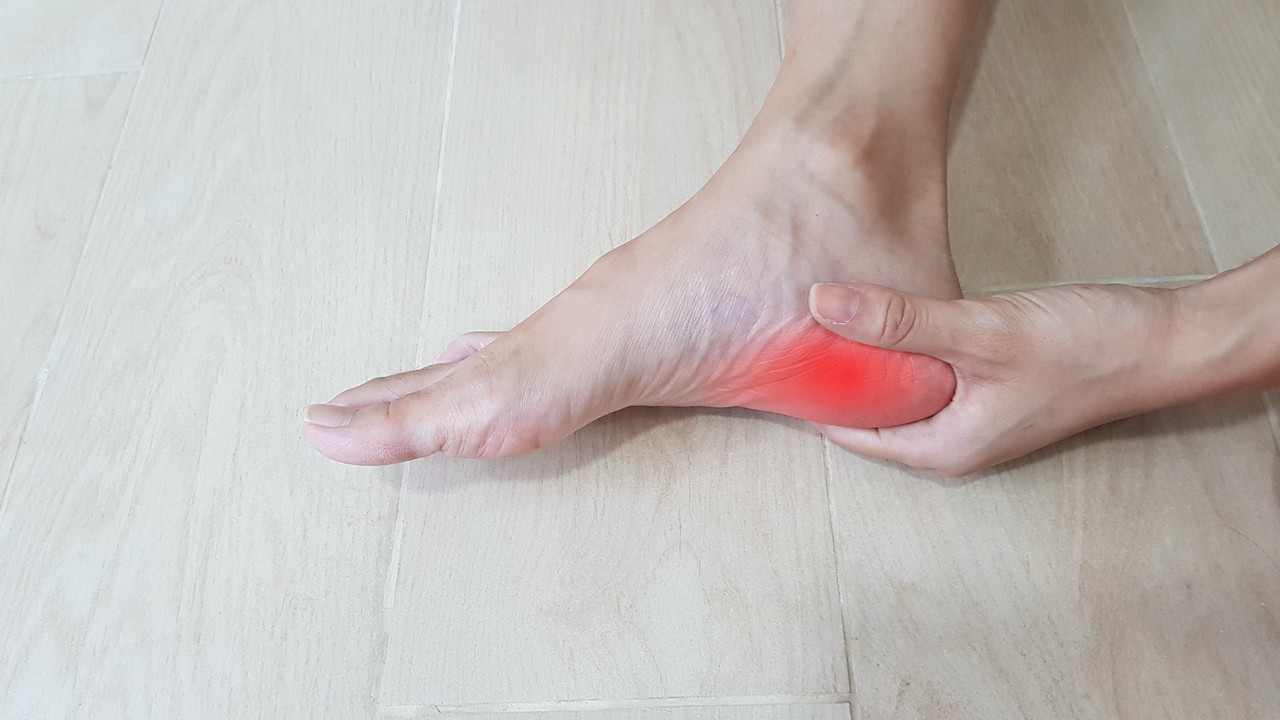Does running build muscle?
We know it works for fitness, but does running build muscle? And are there other physical benefits?

Plenty of people take up running to get fit, but does running build muscle?
If you consider professional athletes, some runners tend to look more muscular than others. Researchers reported in 2020 in the British Sports Journal that many professional sprinters incorporate muscle building into their routines for improved running economy, a faster time trial and faster maximal sprint speed, but not all runners emphasize this.
So does running only build muscle when you add in a strength training program, using movements loaded with kettlebells, barbells and the best adjustable dumbbells to supplement your pavement-pounding sessions? What are the muscle fiber types? And what muscles are used for running?

We combed through the latest research to find out whether or not this sport can really help you gain muscle.
How does running help to build muscle?
In a 2017 study by experts from the Department of Kinesiology at Taylor University, 12 university students and five older subjects were studied as they embarked on a 10-week high-intensity interval training program. Researchers found that 'aerobic exercise is an effective mode of activity for the promotion of cardiorespiratory fitness (capacity of the circulatory and respiratory system) and increase in the whole muscle size of the quadriceps.’
While HIIT can be a form of running, does running at a consistent pace build muscle?
A study published in the journal Exercise and Sport Sciences Reviews, discovered that when you run, you use repetitive weight-bearing motion to work various muscles in your lower body, including your glutes, quads, and hamstrings. The study also concluded that the best way to promote muscle growth with cardio is to exercise for 30-40 minutes four to five days a week with an intensity of 70-80% heart rate reserve. This heart rate reserve is the difference between your maximum and resting heart rates.
However, just running will not be enough to build muscle. If increased muscle mass is your goal, incorporating sprint and muscle training, like HIIT, can help you gain muscle mass, according to the Journal of Exercise Science. Alongside your training, getting enough rest, listening to your body, and eating a nutritionally balanced diet will also help build towards your goals. We have advice on what to eat before a run if you need it.
- Related: Best sports bra for running
Runner biomechanics
The joints, muscles and tendons come under strain as you pound the pavement.
How long does it take to build muscle?
Defining how long it takes to build muscle is tricky as it depends on a variety of factors. From your body to your eating plan to your training regimen, there are a lot of factors in how long building muscle can take. According to a 2019 study by the Institute of Sports Sciences, it can take six to 10 weeks depending on the type of training you do.
Skeletal muscles, which are worked during a run, have two types of fibers; slow- and fast-twitch. Slow-twitch muscles are fatigue resistant and focus on small movement as well as posture control; these are aerobic and are used during long-distance runs. On the other hand, fast-twitch muscles focus on big powerful forces for a short time. You will typically find these are used when sprinting.
According to the National Academy of Sports Medicine, ‘Power athletes have a higher ratio of fast-twitch fibers (e.g., sprinters 70-75% type II), whereas for endurance athletes have more slow-twitch fibers (e.g., marathon/distance runners 70-80% type I) (2).’ The difference of emphasis in these fibers is why sprinters tend to look more built when compared with cross-country and long-distance runners - fast-twitch muscle fibers bring the explosive power needed to sprint.
So, where does running build muscle? On the lower half of your body – if you want to get a stronger core, you'll have to try out other exercises. Doing HIIT and speed training is not enough when it comes to building muscle. Nutritionists recommend using a healthy diet with plenty of protein and nutrients as well as muscle training and rest to build your muscles. If you are not sure where to start, consider consulting with a certified professional trainer.
What does muscle building actually mean?
Muscle building involves doing exercises that use tension to build muscle. Muscle building occurs when muscle protein synthesis exceeds muscle protein breakdown - if you make more protein than your body moves. Exercise stimulates the body to perform muscle protein synthesis, which can help you work towards a net muscle gain, according to the British Journal of Sports Medicine.
Another way to work towards a net muscle gain is to harness a growth hormone spike. Growth hormone spikes tend to last longer after performing endurance training, according to the Journal of Applied Physiology. This spike can encourage your body to build more muscle if harnessed correctly. Some ways to harness a GHS include performing hill workouts and incorporating speed work into your running routine.
Adding strength training into your routine is another great way to build muscle. Some benefits of adding strength training to your routine include:
- Reduced fatigue
- Faster runs
- Better runs
- Reduced likelihood of injuries
However, building muscle can be dangerous, especially for new runners. Pushing yourself too hard can lead to certain injuries, according to the Cleveland Clinic such as:
- Plantar fasciitis
- Achilles tendinitis
- Runner’s knee
- ITB syndrome
- Shin splints
- Stress fractures

Being mindful of your body and wearing the proper footwear can go a long way to ensuring that you do not injure yourself. Build yourself up slowly and you will see improvement in your ability and muscle mass over time.
Read more: Is running good for weight loss?
Does running build muscle? It can, depending on what you do. Incorporating different running styles into your training as well as strength training can contribute to muscle growth. Training alone is not enough, however; getting the right nutritional balance from your food, getting plenty of rest, and drinking plenty of water all play a role in helping your body build muscle, according to the Journal of Athletic Training. If you need to know, we have advice on how much water you really need to drink. It is vital to remember that your body may need a different training and nutritional regime to achieve the same results as another runner; not all bodies are the same. If you need help building a routine, contact a local certified trainer for advice on where to start.
Additional resources
Sign up for the Live Science daily newsletter now
Get the world’s most fascinating discoveries delivered straight to your inbox.
Chloe Page is a UK-based freelance writer and editor with a bachelor’s degree in Creative Writing from the University of Winchester. Over the span of her seven-year freelancing career, Chloe has covered various niches, including health, fitness, plumbing, entertainment, and music. Her work includes interactive fiction, blog posts, and web copy. When she’s not writing, Chloe enjoys streaming, cycling, and trying new recipes.
- Scott DutfieldContributor











